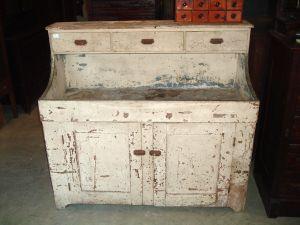Prepare Furniture for Painting
Media Gallery
Correctly Prepare Furniture for Painting to Yield the Best Results
To prepare furniture for painting, you must first get the wood ready. It can be easy to side-step the preparation process, but following recommended furniture preparation techniques will yield better results and help the paint last a lot longer.
Most wood furniture that will be painted falls into one of the following categories:
- Brand New Unfinished Wood Furniture
- Antique Wood Furniture that has an Old Layer of Paint
- Old Furniture that has been Stained or Varnished
Brand New Unfinished Wood Furniture
For obvious reasons, getting new unfinished wood furniture ready for a coating of paint requires the least amount of preparation. Unfinished wood should be examined for any dents, dings or other damage.
If damage exists, the problem areas should be filled with wood filler. Make sure to follow the instructions on the container of filler. Most types require a specific application process and drying time. After dry, the filled areas should be sanded and smoothed. When dry, two layers of primer should be applied to the wood. Each layer should be allowed to thoroughly dry before the next is added. After the second layer of primer is dry, paint can be applied.
Antique Wood Furniture that has an Old Layer of Paint
When an old layer of paint exists on a piece of antique furniture, there are two ways to deal with the situation.
The first allows you to apply new paint over the old paint without stripping off the old layers. If the old paint is in relatively good condition, it can be lightly sanded to create a rough surface that the new layer of paint will grasp. After repairing any dents and dings with wood filler, the furniture is ready for a layer of primer. Once the primer is dry, the furniture can be painted.
The second method involves stripping off the old paint. This is often necessary if the furniture’s surface has been waxed or if the furniture’s old paint is bubbling, chipping or excessively cracked. Paint stripper can be purchased at local hardware stores and should be used according to the container’s directions. Once stripped, the furniture is ready to be primed and painted.
Note: Most likely old painted furniture will have lead based paint. Only wet sanding or stripping is recommended. Test all painted furniture for lead before doing any sanding.
Old Furniture that has been Stained or Varnished
Stained and varnished furniture must be sanded before primer and paint can be applied. The goal is to use sandpaper that will create a slightly rough surface on the wood so that the primer will adhere correctly. After sanding, make sure to fill any dents or holes in the furniture with wood filler. After the wood filler has time to dry, sand the repaired areas. Next, use a tack cloth to remove any leftover dust that collected on the furniture after the sanding process. When clean, the wood furniture is ready for its first layer of primer. After the second layer of primer has dried, the piece can be painted.
The Importance of Prepping Furniture for Painting
It is important to prepare furniture for painting. You might have a piece of old furniture that needs a new coat of paint, and you may feel like it is not worth the effort to prepare the surface. You simply want to get the new paint applied as fast as possible.
If you are at all concerned about the longevity of the new paint you must follow the necessary steps. It is not overly time consuming to sand the surface and apply two layers of primer before adding paint. These two steps will prevent old stains and old paint from showing through the new layers of paint and will also help the new paint to stick appropriately. After applying two or three layers of paint, the surface can be finished with a coating or two of water-based polyurethane with a satin or semi-gloss sheen.


